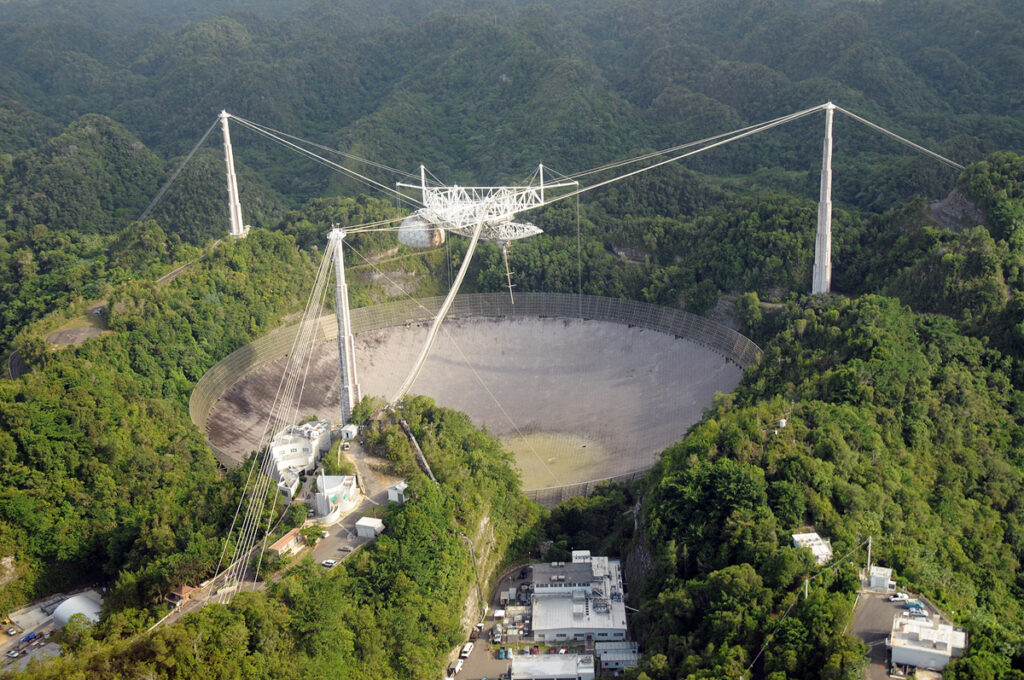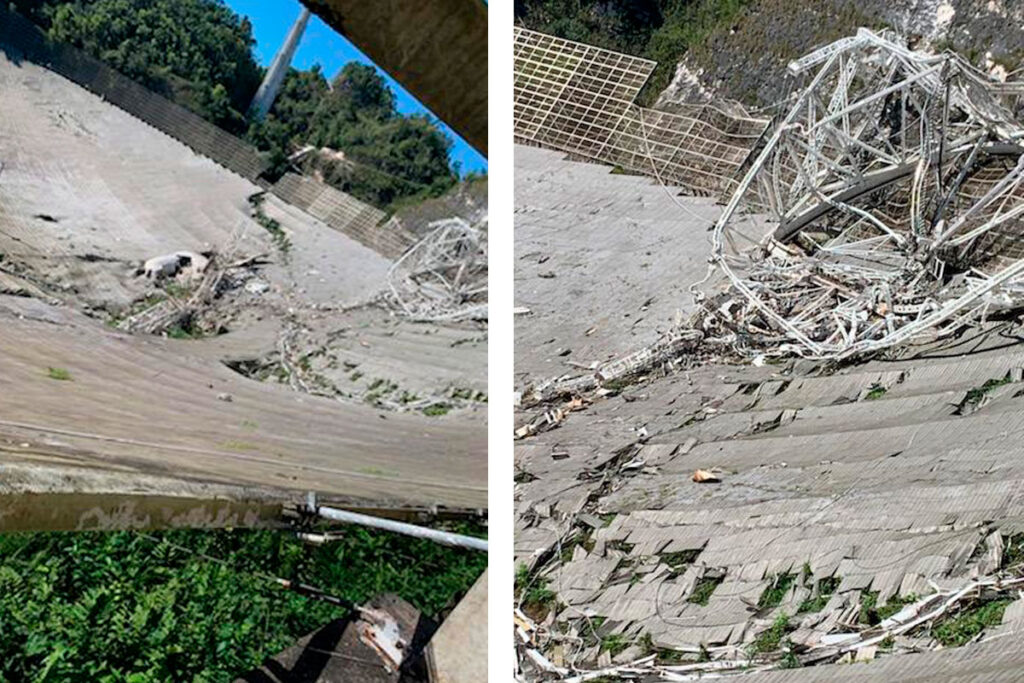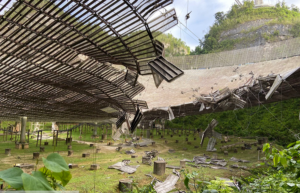
Arecibo, the world famous radio telescope in Puerto Rico, collapsed this morning, destroying the historic structure. At 7:55am local time today, the massive scientific facility made famous in astronomy circles and in pop culture collapsed, destroying the already damaged site. Arecibo has weathered severe hurricanes and earthquakes in recent years; however, structural failures that suddenly popped up in the last few months have doomed it.
The planetary radar capability at Arecibo, funded by NASA’s Near-Earth Object (NEO) Observations Program, has served as one of two major planetary radar capabilities. It has allowed NASA to fully characterize the precise orbits, sizes, and shapes of some NEOs passing within radar range after they are discovered by wide-field optical telescope survey projects.
Outside of science, the telescope was used as a backdrop in motion pictures, potentially inspiring new generations of scientists. Hit movies “Golden Eye” with Pierce Brosnan as James Bond and “Contact” with Jodie Foster as Dr. Ellie Arrowa made the radio telescope famous to the masses.

Back on August 10, an auxiliary cable supporting the radio telescope suddenly snapped, damaging the telescope and creating a structural weakness on the system of cables and towers that suspend the structure in the hills of Puerto Rico. In November, a main cable connected to the same support tower, also broke, causing additional damage to the dish and other nearby cables.
The National Science Foundation (NSF) which oversees Arecibo, assessed the impact of the cable breaks in November and found that the facility’s other cables could also fail soon. There assessment showed that if some of the remaining cables break, engineers fear that the 900-ton suspended platform above the facility could come crashing down on Arecibo’s iconic 1,000-foot-wide dish. Based on that assessment, the National Science Foundation decided to decommission the site. Unfortunately, their prediction of collapse came true today. Fortunately, no one was injured in today’s disaster.

“We knew this was a possibility, but it is still heartbreaking to see,” says Elizabeth Klonoff, vice president for research at UCF, which manages the facility for the NSF. “Safety of personnel is our number one priority. We already have engineers on site to help assess the damage and determine the stability and safety of the remaining structure. We will continue to work with the NSF and other stakeholders to find ways to support the science mission at Arecibo.”
Initial findings indicate that the top section of all three of the 305-meter telescope’s support towers broke off and landed outside the area of the dish. As the 900-ton instrument platform fell, the telescope’s support cables also dropped. The Gregorian Dome is in the dish and the platform is lying on the edge of another side of the dish.
The Arecibo Observatory was home to one of the most powerful telescopes on the planet. Its instruments were used by scientists around the world to conduct research in the areas of atmospheric sciences, planetary sciences, radio astronomy and radar astronomy.
In January of this year, China brought on-line the world’s largest radio telescope. The Five-hundred-meter Aperture Spherical radio Telescope, known as “FAST” and nicknamed Tianyan, which means “Eye of the Sky/Heaven”, is a radio telescope located in Pingtang County, Guizhou, southwest China. FAST consists of fixed 500 m (1,600′) diameter dish constructed in a natural depression in the landscape and serves as the world’s largest filled-aperture radio telescope.